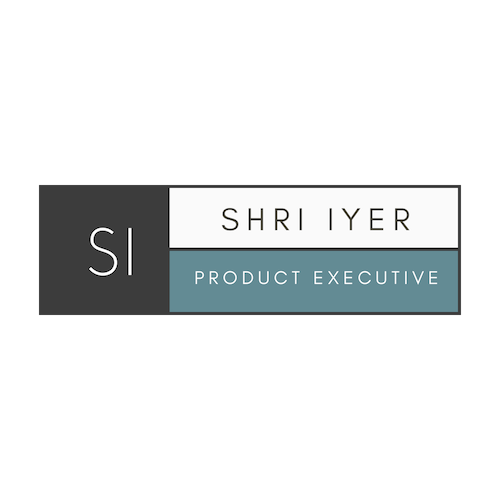Product managers come from a variety of backgrounds. Some of the more popular backgrounds for an entry into product management are Marketing, Sales Support, Engineering, Quality Assurance, Customer Support, and Tech Support. This isn’t an exhaustive list by any means. I’ve even seen teachers, psychologists and accountants become successful product managers. As you can see, there are many entry points into this interesting and important role.
Once you’ve established yourself as a product manager, your career path can continue in different phases for years to come. Throughout your career as a product manager, you’re likely to find yourself in a few different positions. One thing you’ll know for sure; you have a career opportunity to climb the proverbial ladder. In our last blog, we focused on what Product Management (PM) is; this month, we want to take a dive into the career path for a PM and what it entails. We’ll take a look at the most common roles a product manager.
Associate Product Manager
An Associate PM is an entry-level product role and the first step on the product manager career path. When an organization hires for this position, they are looking for an understanding of what product management is and for your interest and passion. Not all organizations will have or need an Associate Product Manager. But those organizations that are well established will look at acquiring talent early. Hiring qualified PM’s may be difficult, so one way for organizations to bring junior talent into the company is to use the associate product manager role and then provide them the required training and groom them into the product manager their organization needs. In other cases, organizations may have an experienced pool of product managers and hiring another experienced PM may just not be required. The existing product managers may not have the bandwidth to take on new products or features. In such cases, hiring an associate product manager may make sense from a budgetary, output and alignment perspective.
As an Associate PM, you’ll most likely work with one or more product managers. Your duties and responsibilities will be more or less similar to that of a product manager – assisting with customer discovery, identifying and crystalizing requirements, collecting quantitative and qualitative product data and metrics, making sense of the data collected and coordinating with the various stakeholders. You will collaborate daily with other members of the product, UX and engineering teams. You will regularly communicate the status of your product to all relevant stakeholders. You’d be directly working with engineering teams and join the sprint ritual with your fellow product managers or you may have no interaction with engineering at all until you’ve learned to climb the ropes. In terms of product responsibility, as an Associate PM you would generally work on enhancing existing features for an existing product. When you’ve mastered the above activities, you’re ready to move up as a full product manager.
Product Manager

To become a full product manager, you’ll need to have some prior product management experience. But I have also seen many people launch their careers into product management at this career level because they demonstrated sufficient experience in collaboration, communication, or the domain. As a PM, you become the point person for the team and the product. You’ will be providing the necessary linkage between engineering and other teams such as sales, marketing, customer support and finance. On this career stage, you should have a demonstrable understanding of customer benefits your product provides. You should be aware of customer problems and needs, be able to provide up to date info. You’ll be consulted for advice on tactical moves, processes, alignment, and relationships, and will need to be confident and well-informed by data. You’ll take a goal first approach and create initiatives that support the company strategy.
To move to the next level, you need to be driven to help the team accomplish its broader goals. As the go-to person for your product, you display a demonstrable understanding of the value proposition of your product and the corresponding customer benefits. You can articulate the specific customer problems that your product solves and you can tie the product metrics to the business goals. When you are the top of your game, you’ll earn the respect of engineering, UX, marketing and sales and their trust. You’ll also know you’re ready to take on a more senior role on the product manager career path because you’re hungry for more.
Senior Product Manager
The role of a Senior PM is similar to that of what you may be used to as a PM. To obtain this role, it’s likely that you’ll need some prior PM experience. If you don’t have prior experience as a PM, depending on your experience level, you may still be able to land this role. Keep in mind, as a PM, you’ll have a substantial amount of experience in different fields from engineering and R&D, to tech, marketing and, sales support. So, having the right experience in these fields may still be able to open the doors into the world of Product Management.
In addition to your leadership skills, your additional duties as a Senior PM will likely consist of:
- Setting profit goals
- Developing a product strategy
- Analyzing and understanding user feedback
- Oversee product management
- Handle communications with senior managers and report progress
As a Senior PM, your duties will be similar to that of a mid-level PM; however, your impact on product development and visibility may be on a much higher level. Additionally, you’ll likely have the responsibility of leading other PM’s within your organization; so be aware that leadership is going to be a huge part of what you do. As a Senior PM, you have a major focus on the product process and work closely with the development and product team. Your insight and advice is critical, and your leadership is essential as you may consider moving on to the next role.
Product Director
From Senior PM comes the next step of Product Director. By now, your leadership skills and experience are an essential component to what you do. As a Director, you’ll have a team directly under you, and your major duties will consist of overseeing the team to ensure the product process is going smoothly. While you’ll still be focused on the product and development process, your main insights are going to come in when finding ways to improve the process while keeping your team involved.
The role of Product Director often requires a lot of focus on the product market and how your product will fit into it. This information needs to be relayed to your product team so they’re aware of how the market is performing. Usually, Directors of Product spend much time researching the rivals, industry best practices and the market landscape. This gives them the right to be a mentor for the rest of the product team. Your list of regular duties as a Product Director can be long, but generally, here is what you can expect in your day to day:
- Overseeing the entire product team
- Product lifecycle management
- Measure product performance metrics
- Conduct competitive analyses
- Overseeing on-going development of product and vision strategy
VP of Product
As a VP of Product Management, your duties go from more of a hands-on role to more of a direct support role. Handling more of the back-end duties, from budgeting to overseeing any product decisions or strategic decisions are continuing to remain in line with your organization’s objectives. Here, you’re focusing on maintaining product organization and working closely with C-Level executives, stakeholders, and other organizational directors. As a product VP, you’re considered part of your organizations executive team, so working with other executives is a main factor in your day to day duties.
Regardless of what level your role as a PM is, you will likely have many similar focuses, just on different levels. Generally, it’s safe to say that a Product Manager on any level will have many different areas of focus and expertise, such as:
- Strategic Thinking
- Communication
- Collaboration
- Technicals
- Details & Quality
- User Science & Empathy
- Management
Chief Product Officer
Once you’ve gone through most of the PM stages and made your way up the ladder, you’ll be faced with the role of heading the entire PM department. As the CPO, you are the direct leader for roles such as VP of Product and Director of Product and your day to day tasks are on a much broader spectrum. Here you will focus on not only leading your entire department, but also specific aspects of design, analytics, and engineering. Online technology company Coursera CPO, Tom Willerer, says “My job is to take my deep consumer understanding and apply that to build a product to satisfy, delight and be useful to people all around the world. I’m constantly curating and executing a vision of what product means.” In addition to working with various different departments, and exemplifying exceptional leadership skills, you’re also focusing on areas such as product portfolio, budget, and research. You’re building strategies for a few years out, and going over budgets and numbers regularly.
Aside from heading into the CPO role after you’ve made your way through the different areas of product management, there are a few other options you could potentially venture in to. Those that have had substantial experience in product management can also enter fields such as General Management, COO, or even CEO of an organization. All of these areas would give an experienced PM the ability to continue to use their skills within different areas of business.

Product Management can lead you down a great career path to success. You’ll learn the functionality of multiple departments and sectors within your organization while helping shape a strong and efficient product strategy. Next, we’ll dive into the history behind being a Product Manager, and how the role really came to be.

